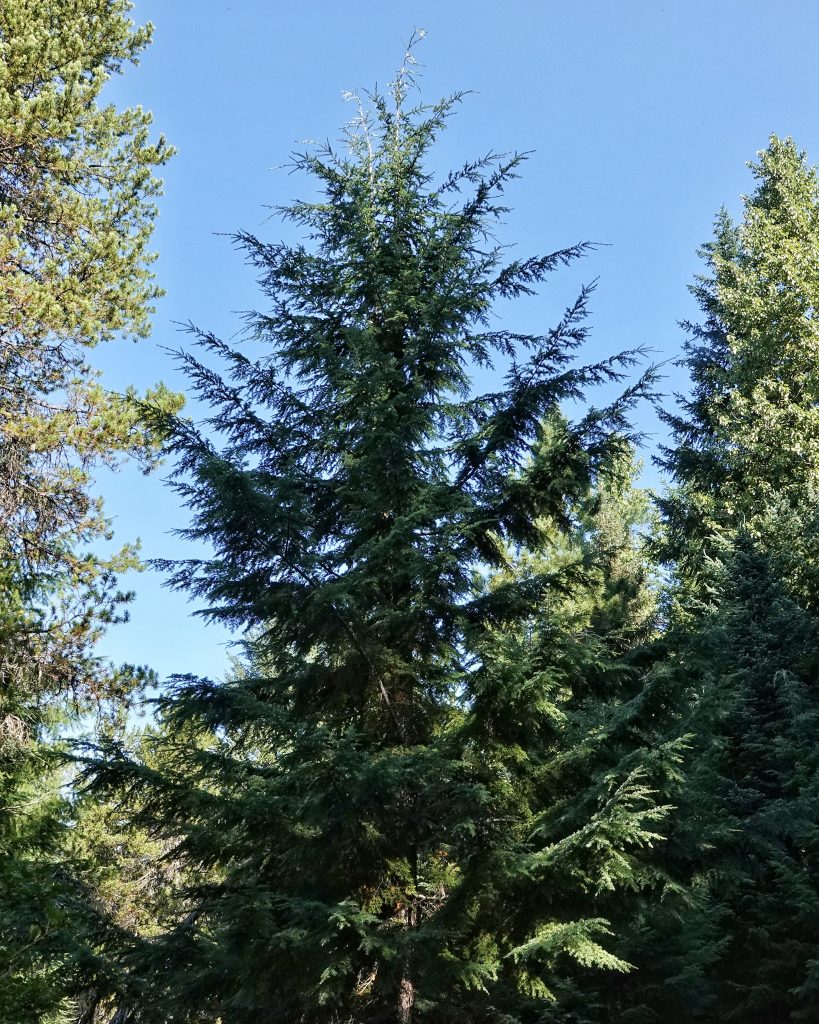
In this profile we will discuss Western Hemlock (Tsuga heterophylla), and how to differentiate it from not just Douglas-fir (Pseudotsuga menziesii) but from its close cousin Mountain Hemlock (Tsuga mertensiana), which is only problematic in a fairly narrow transition zone between about 3,000’ and 4,000’ elevation. Below that it’s all Westerns, and above it it’s all Mountains, but in the middle they can be sympatric, and you have to get up close to see some of the differences. But first we’ll talk about how to differentiate Western Hemlock from Doug-fir, which are, along with Western Red Cedar (Thuja plicata), the dominant conifers in the low to mid elevations of western Oregon and Washington.
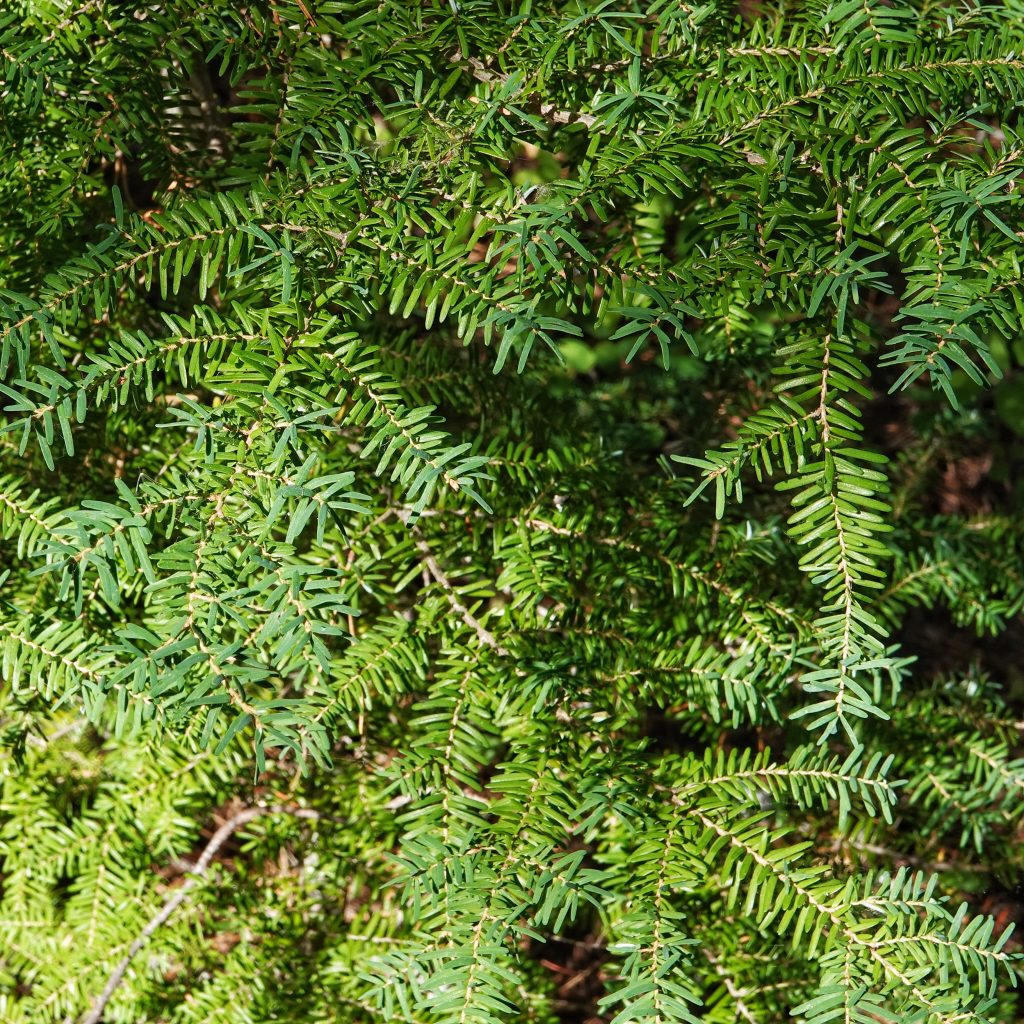
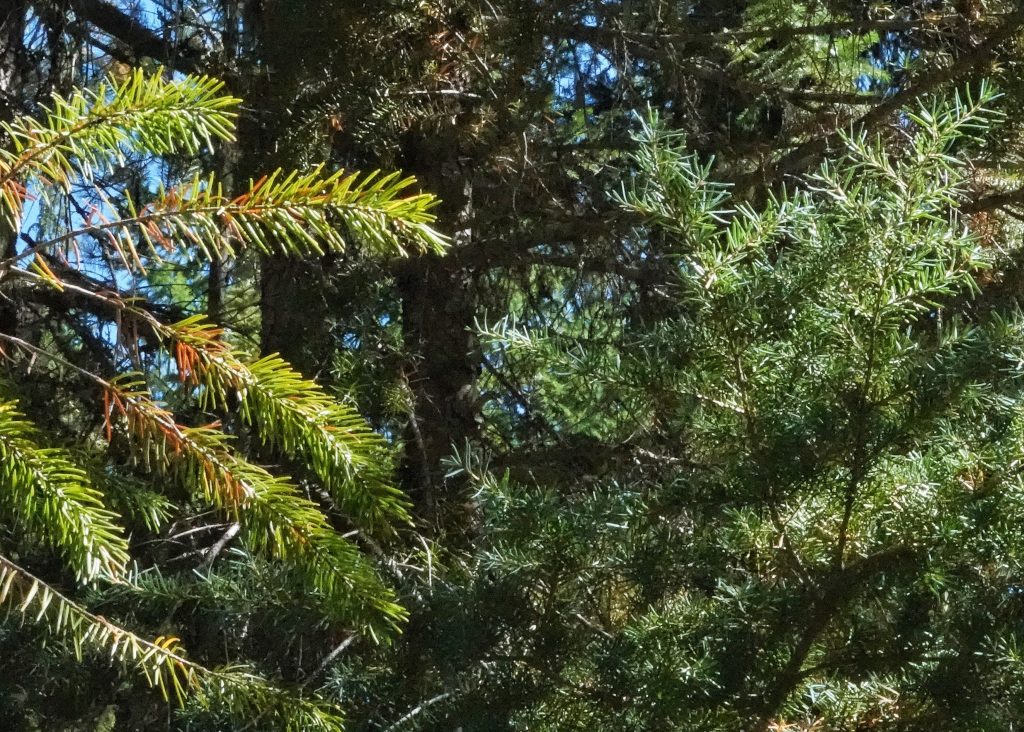
The easiest specimens to differentiate are those that are less than 30’ tall, because their foliage is easily accessible, and the needle form and pattern for each is distinctive. Western Hemlock have slightly oblong (over 1.5mm in width) needles that are two different sizes (with the shorter ones mostly pointing upward), and the longest of which are seldom over 18mm, have a rounded tip, and are all on the top of the stem, whereas Douglas-fir have narrow (under 1.5mm wide) straight sided needles that are all the same size, are 18-30mm long, come to a point, and are arrayed all of the way around the stem. In general, the foliage of Western Hemlocks just looks messier, more disheveled, than that of Doug-fir, which is probably why Western Hemlocks are not grown as Christmas trees. The cones are also quite easy to differentiate, because those of Western Hemlock are less than 1.5” long, and lack bracts covering the egg-shaped scales, while those of Doug-fir are 2.5-4” long and have bracts with an obvious pitchfork or trident shape that extends past the scales.
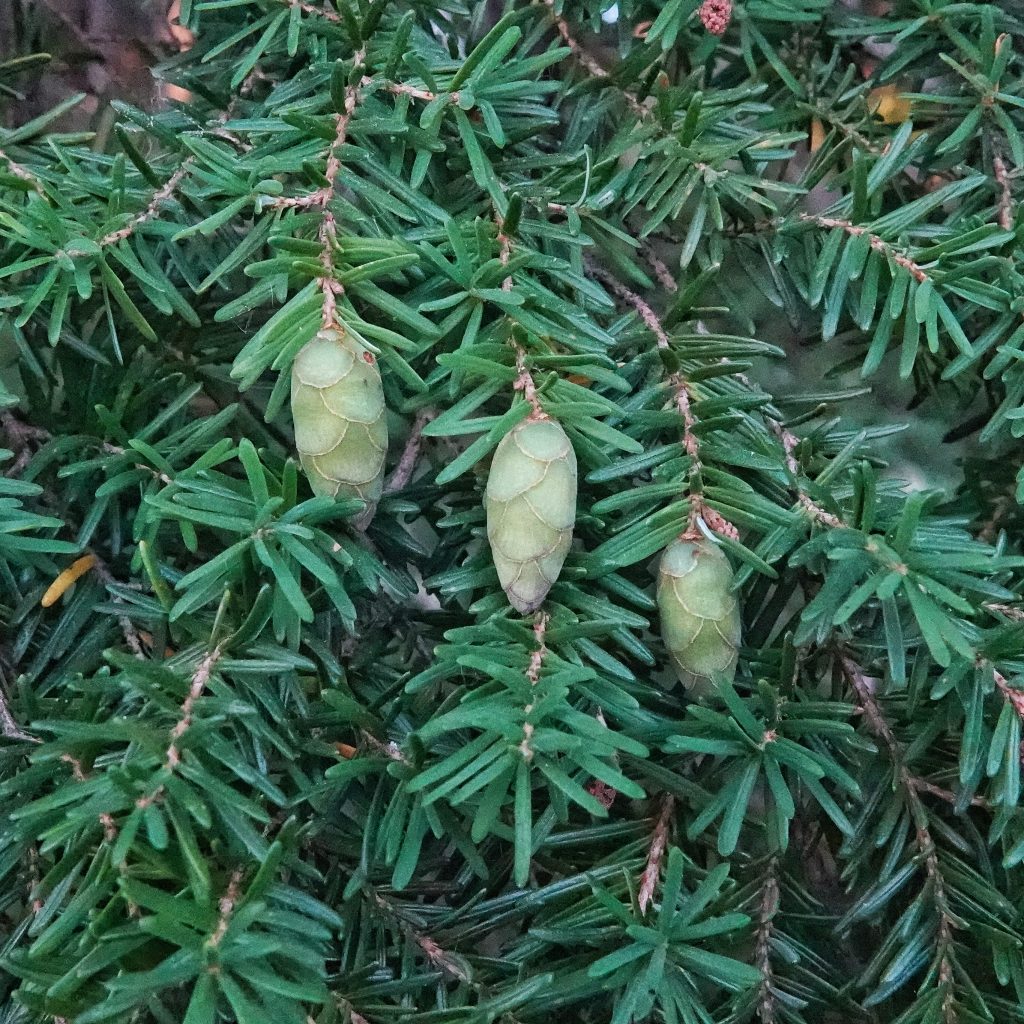
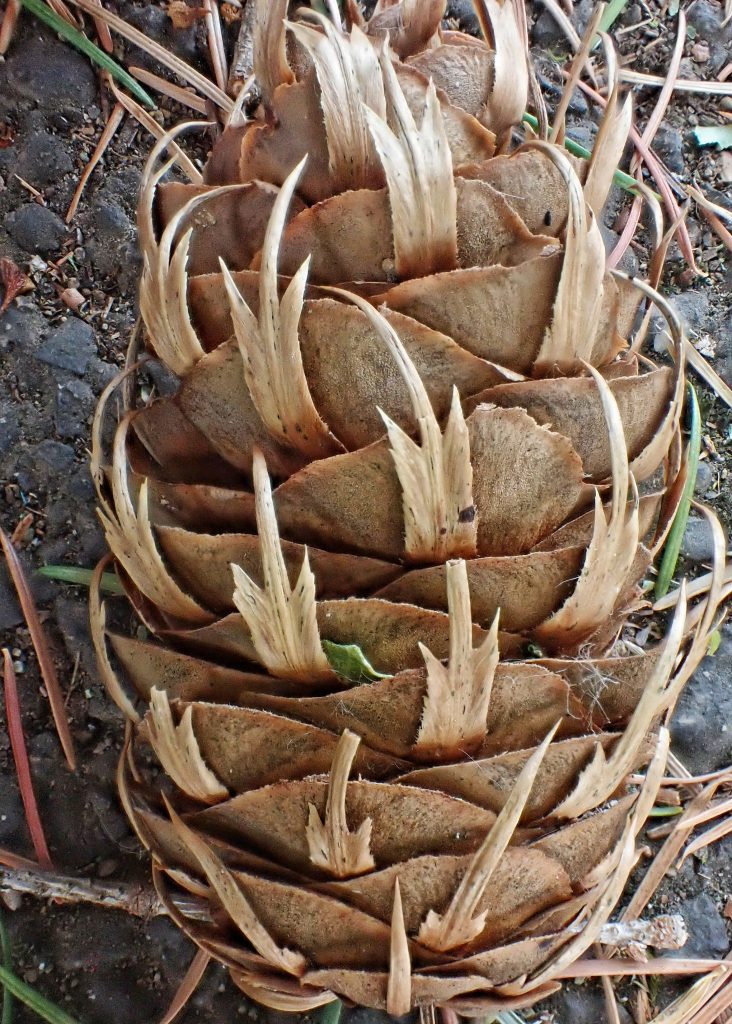
As I mentioned above, mature mixed trees are where it gets really tricky, but there are differences in the bark, and in the form. For one thing it is said that the top (leader) of Western Hemlocks droop, while the leader of Doug-fir is erect, although I haven’t always found that useful because I often can’t see the top of the tree. Because Western Hemlock have shorter needles and shorter side branches a silhouette of an upper branch looks rather lacy, whereas Doug-fir appears somewhat clubbed. When Western Hemlock has lower branches that droop straight down, they have a messy appearance, while the frequent drooping branches of Doug-fir tend to look clean and ropy.
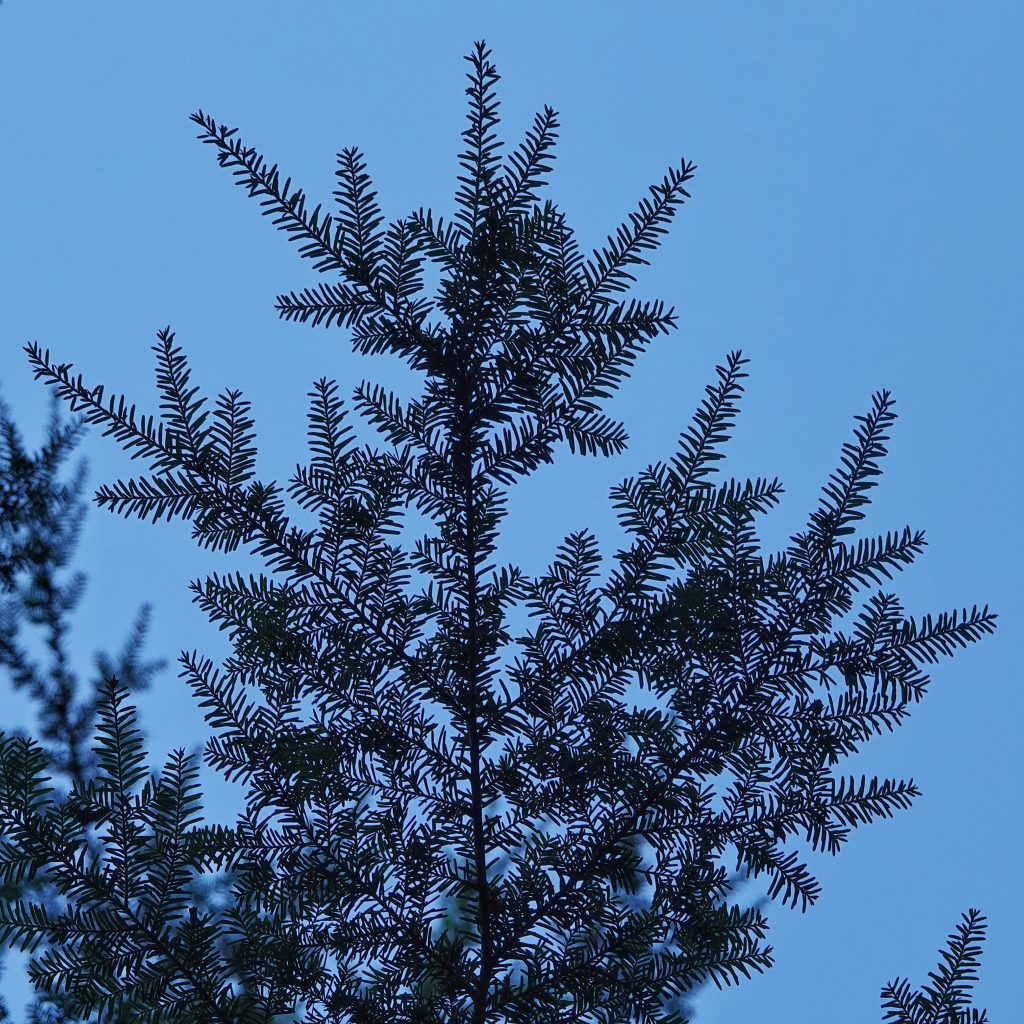
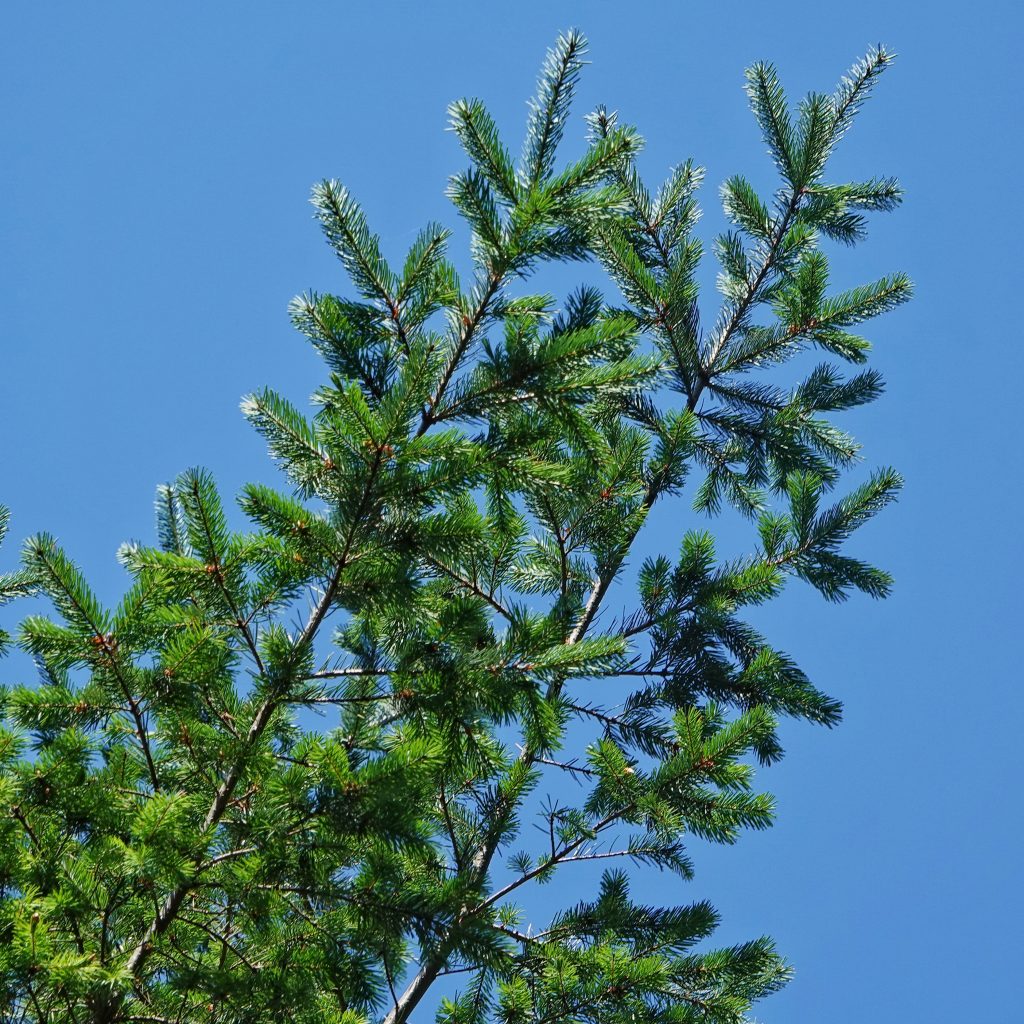
For those of you with good color vision, you may note that the bark of Western Hemlock is reddish to purplish brown, while that of Doug-fir is greyish to reddish brown. But for us colorblind folks it is easier to look for the fact that the relatively thin bark (1-1.5” thick) of Western Hemlock has narrow plates with shallow furrows, while Doug-fir bark, because it is 3-10” thick, breaks into broad plates with deep furrows. Distinguishing the two by bark alone takes considerable practice, and I’m far from expert at it, but during a recent trip to a fairly open forest containing both species I had about a 90% success rate, as confirmed by finding cones at their base.
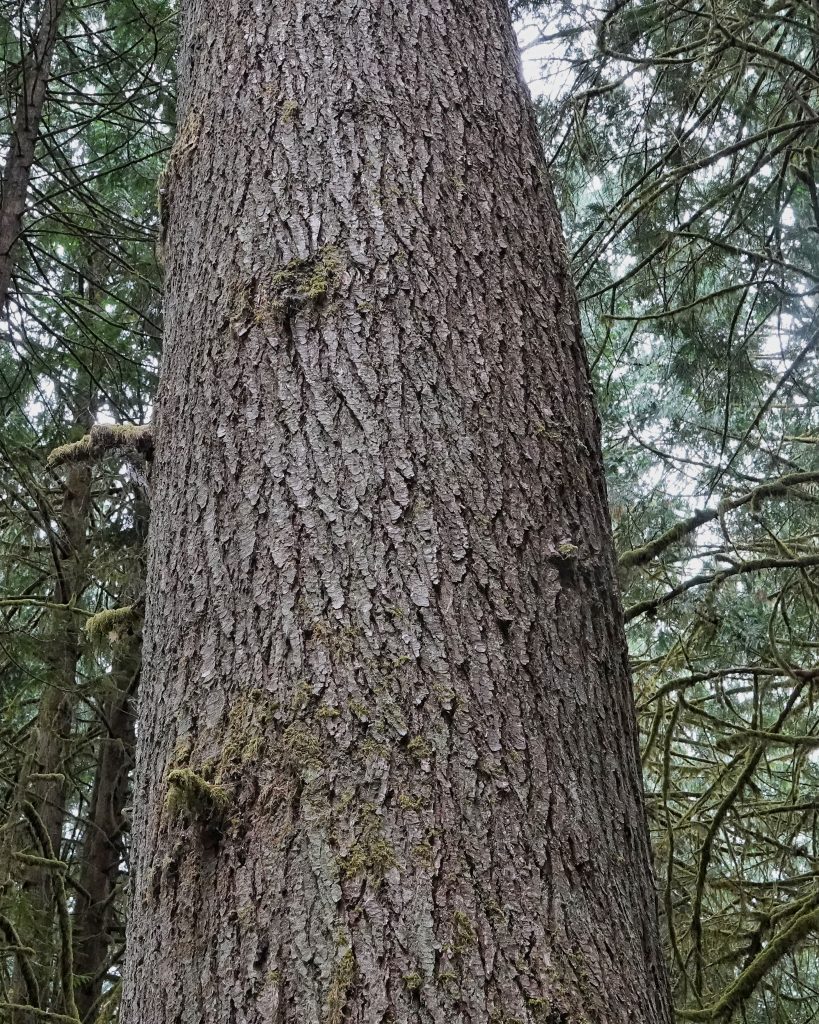

I can’t speak from much experience as to differentiating Western from Mountain Hemlock, since I’ve yet to find a Mountain Hemlock over about 30’ tall, so I haven’t observed their mature bark. Nor have I found one with cones, although that is one of the best identification traits, since the cones of Mountain Hemlock are 1.5-3” long, which is twice the size of those of Western Hemlock. But the needles alone seem sufficient to differentiate the two because, even though neither has needles over about 18mm long and their shape and proportions are very similar, those of Mountain Hemlock are all the same size, are arrayed around the stem rather than only on the top half, and tend to be blue green, rather than yellow green.
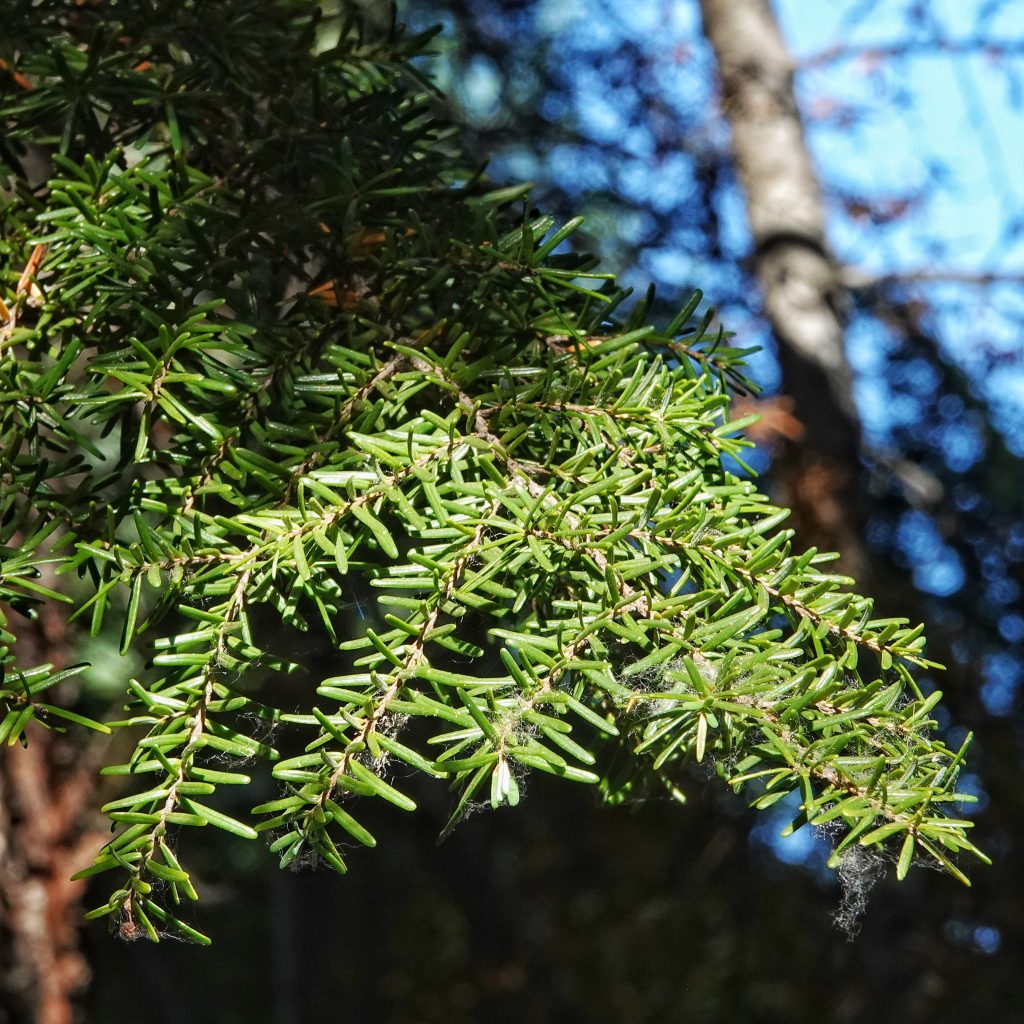
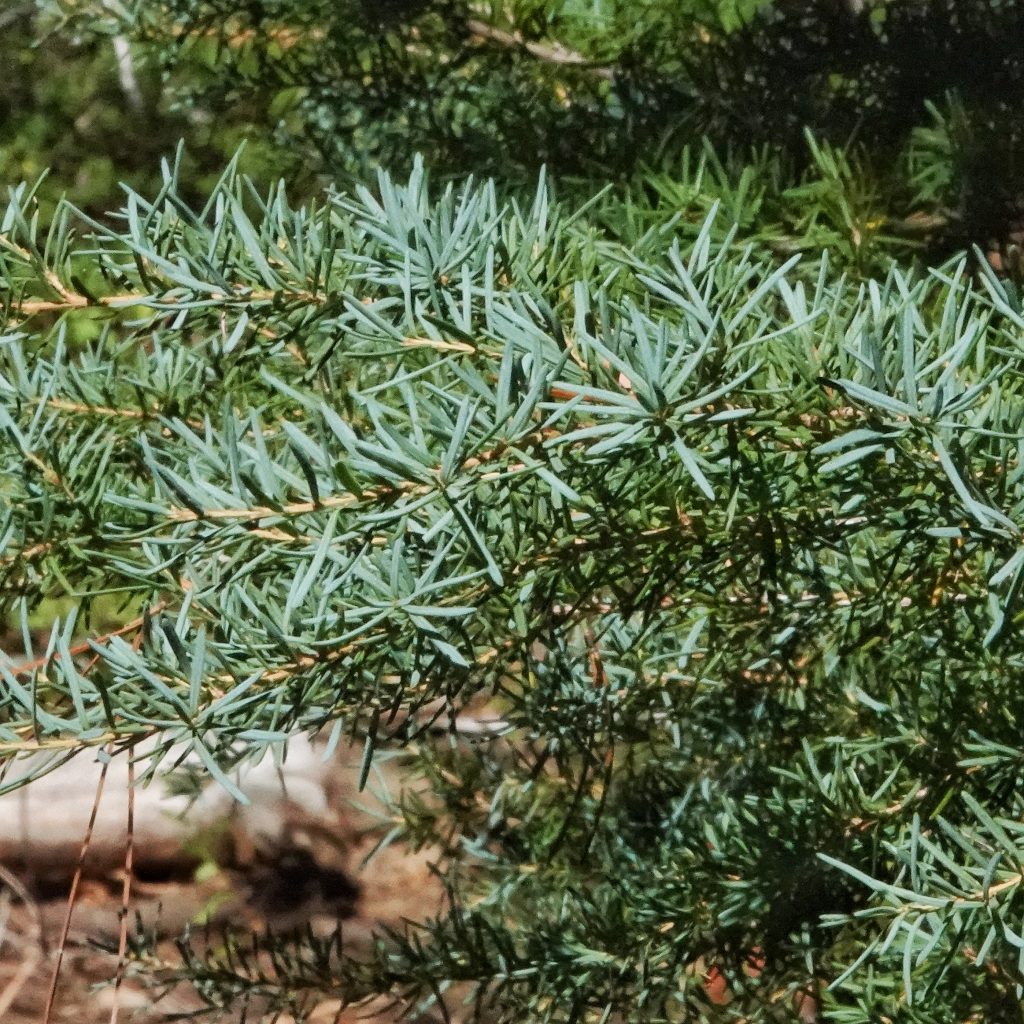
Western Hemlocks are one of the most shade tolerant of conifers, and often begin life on decomposing ‘nurse logs’ and other organic debris, which gives them a competitive nutrient advantage over Doug-fir and Western Red Cedar, which mostly establish on mineral soil, though it does limit them somewhat in areas without much woody debris. Like Doug-fir they tend to bide their time in the understory, and then grow rapidly when overstory trees fall and allow more light into the forest floor. With their thin bark they are not fire tolerant, but fires also create a lot of organic debris, which eventually creates a good substrate for ensuing generations.
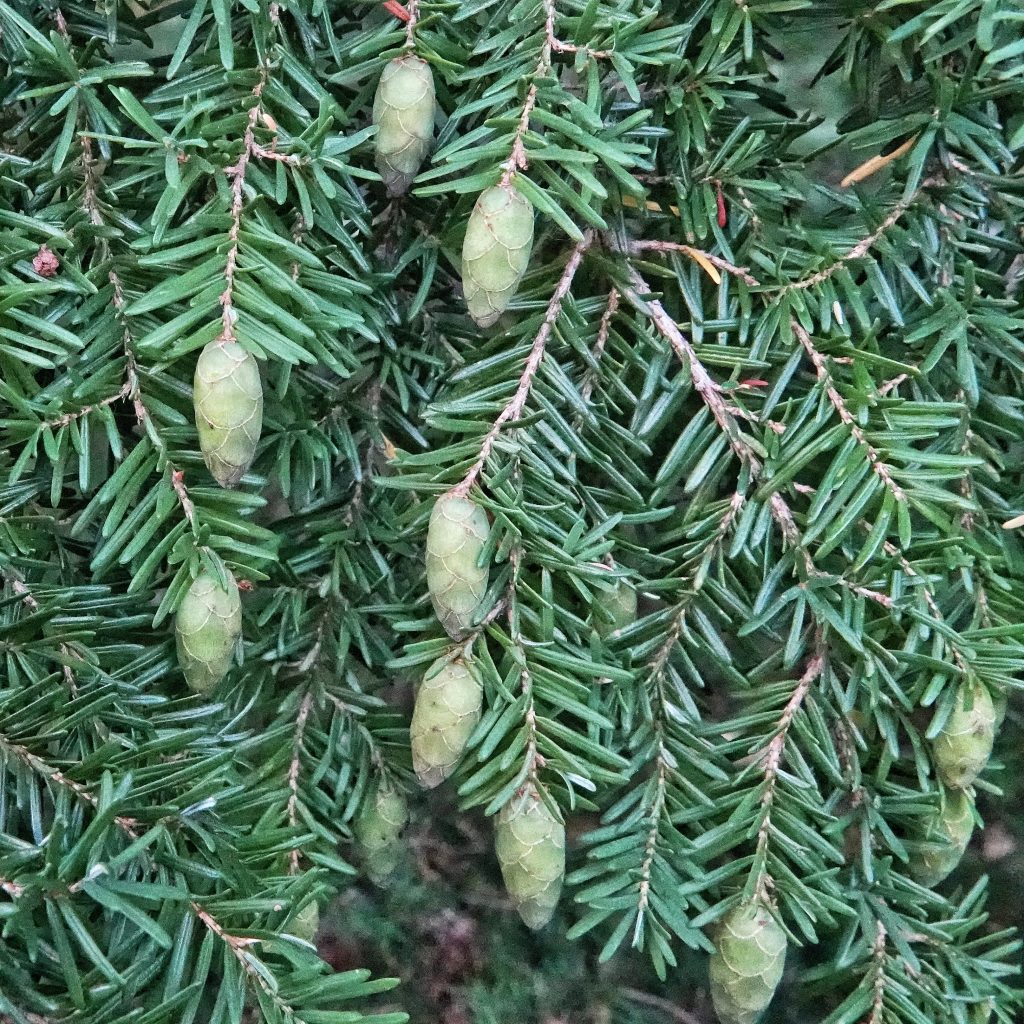
One of the things I’ve learned while looking into the conifers (which shouldn’t have surprised me but did) is how many animals feed on them. The list I provide is just the tip of the iceberg of what I can find, and I’m sure there are dozens of other families that eat them. Then there are those that utilize them for nesting and shelter. Just for example, my leaf beetle reference lists 7 species that are found on Western Hemlock, none of which actually eat them. Another thing that has surprised me is how much duplication there is between species. It seems that most things that will consume some part of one species in the family Pinaceae will feed from most others as well. It is said that in most places in North America oaks are the base of the ecosystems, but in the PNW members of the pine family (hemlocks, Doug-fir, spruce, larch, and of course pines) are the real foundation for most of our ecosystems.
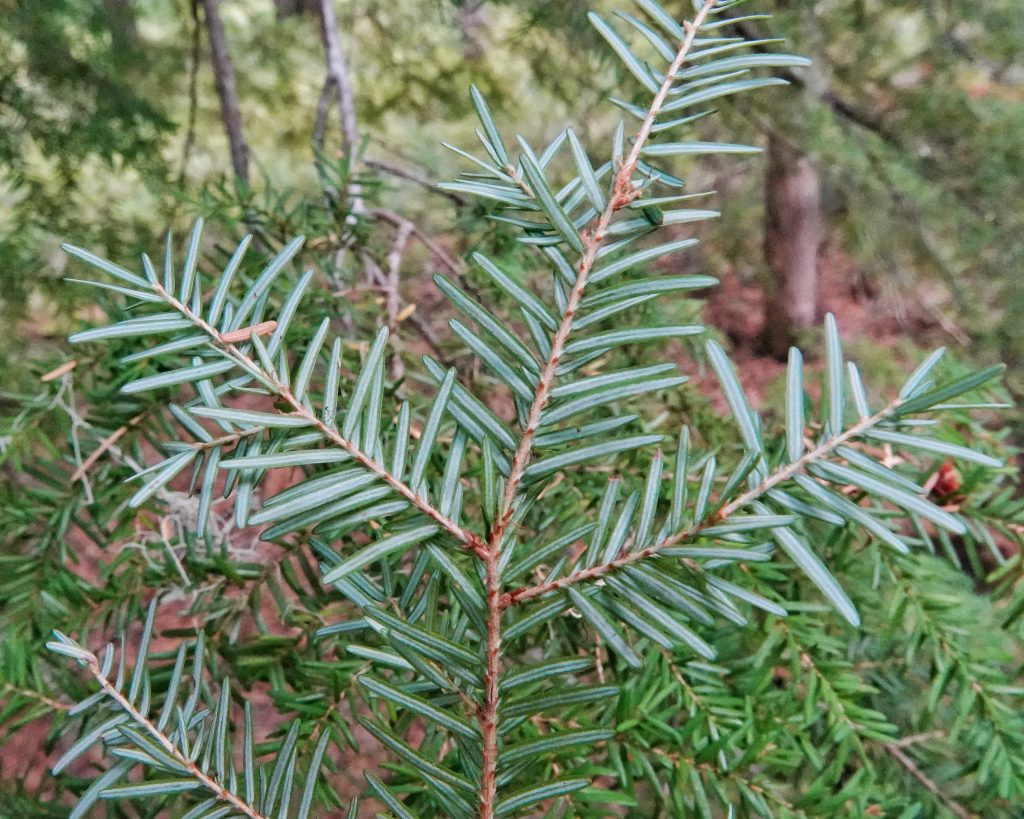
Western Hemlock is an important source of dimensional lumber (usually sold as hem-fir) and other wood. Indigenous peoples had many of the same uses for this as for other members of Pinaceae, but they also utilized it as a brown dye (because of the high levels of tannins), treated hemorrhages with a decoction of bark, and used the inner bark as more of a staple food than they seem to with other conifers. They also placed whole trees in the shallow marine waters where herring spawn, because the sticky eggs would adhere to the needles. They would then remove the tree from the water, harvest the eggs while fresh, and also hang branches to dry, from which the eggs could later be detached by soaking or boiling in water. For all 160 entries for this tree, see the Native American Ethnobotany Database.
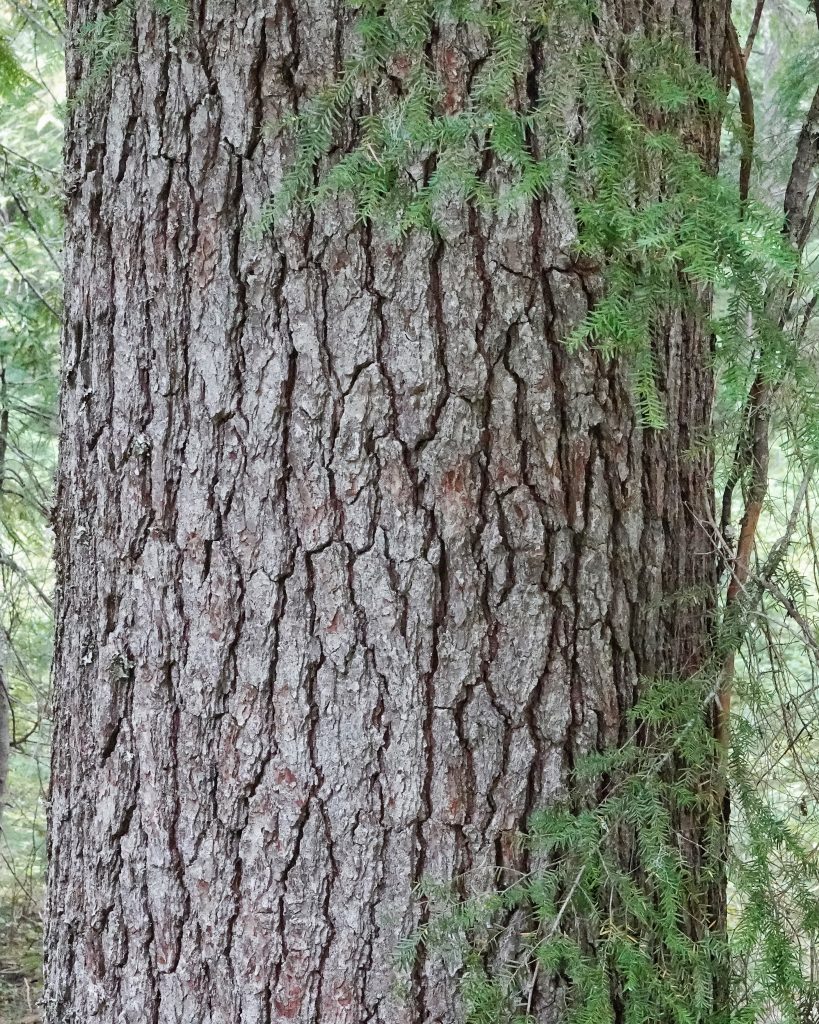
Description-Large (can be up to 200’ tall and 6’ in diameter), straight trunked conifers, with drooping leaders, reddish to purplish brown bark, and two sizes of small (18mm or less), slightly oblong needles with two rows of stomatal bloom on their ventral surface; cones are 17-35mm long, with rounded scales.
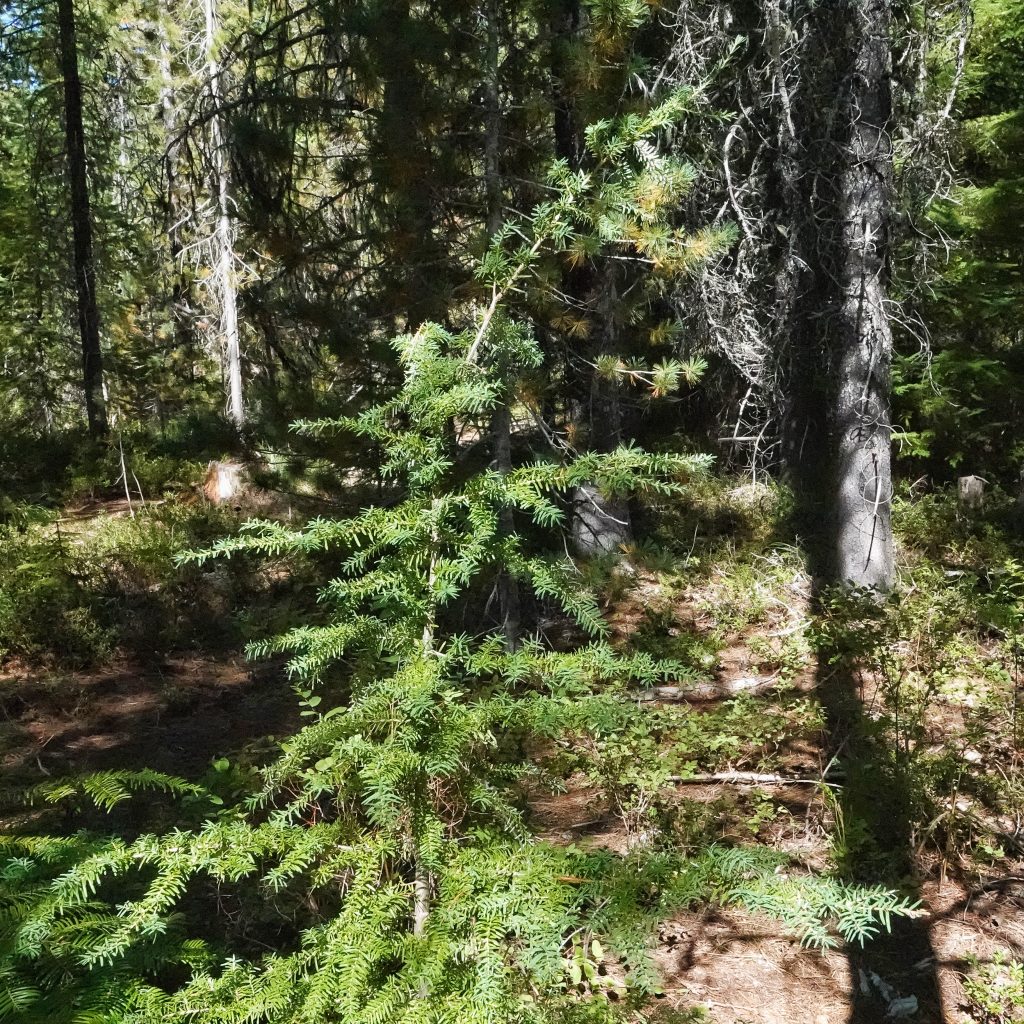
Similar species-See above for Douglas-fir and Mountain Hemlock; True firs (genus Abies) have erect cones, and stiffer needles and branches.
Habitat-Moist to mesic forests up to about 3,000’ elevation.
Range-Northwestern North America; region wide in appropriate habitat.
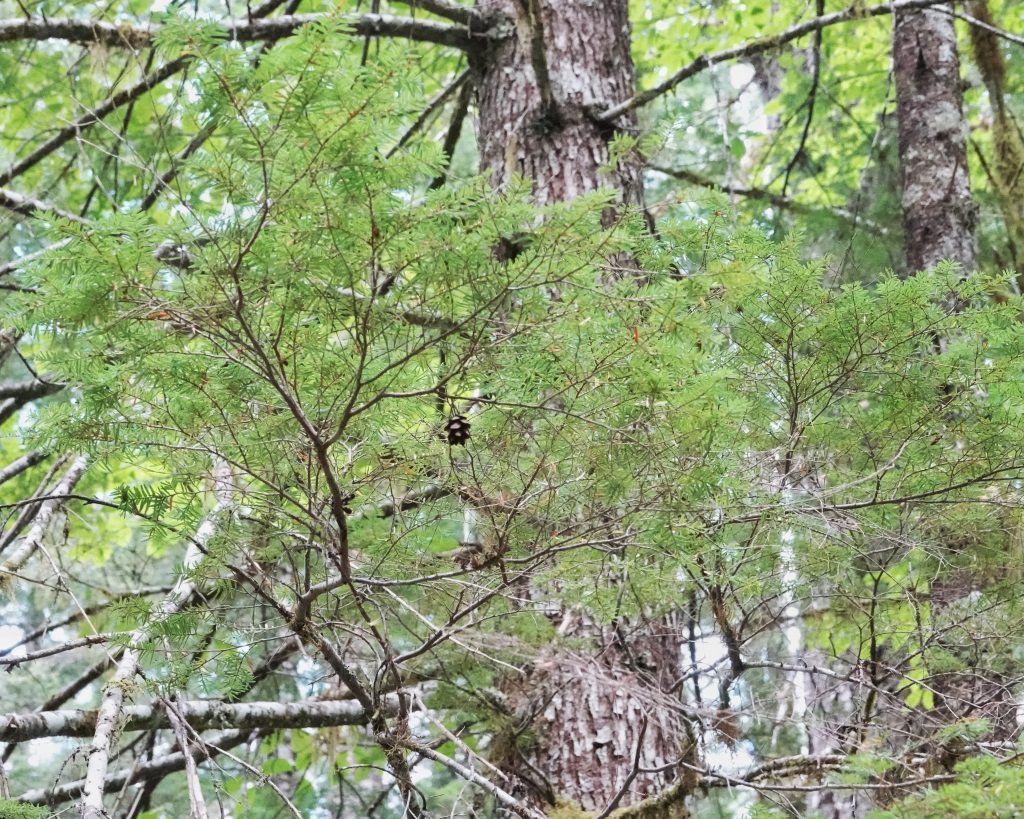
Eaten by-Larvae of the leaf mining moths Dioryctria reniculelloides, Chionodes retiniella, Feralia jocosa, Epinotia tsugana, and members of the genera Marmara and Coleotechnites, as well as a general larval host for over 50 other moths, including Gabriola dyari, Pero mizon, Plagodis pulveraria, Sabulodes edwardsata, Tetracis pallulata, Thallophaga taylorata, Malacosoma californica, Tolype distincta, Dasychira grisefacta, Agrochola pulchella, Aseptis binotata, Cosmia epipaschia, C. praeacuta, Egira perlubens, E. rubrica, Euplexia benesimilis, Lithophane innominata; larval host for Western Pine Elfin, Pine White, and Nelson’s Hairstreak butterflies; larval host for the siricid wood wasp Sirex varipes; Pine Siskins, crossbills, chickadees and mice eat the seeds; Porcupines, Douglas Squirrels, and other mammals eat the bark; deer and elk eat the foliage and twigs.
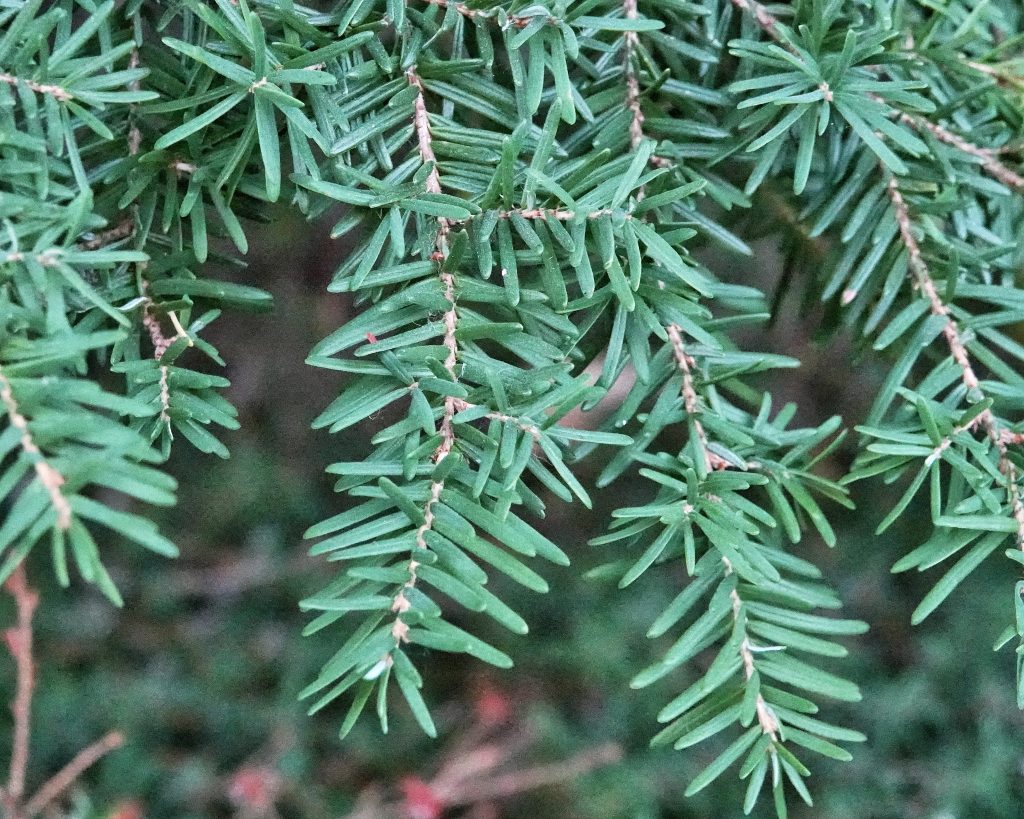
Reproductive timing-Pollination occurs April-June, cones mature in late summer, open in early fall.
Etymology of names–Tsuga comes from Japanese words for ‘mother’ and ‘tree’, and is their name for hemlocks. The specific epithet heterophylla is from the Greek words for ‘different leaves’, and alludes to the different sized needles of this tree.
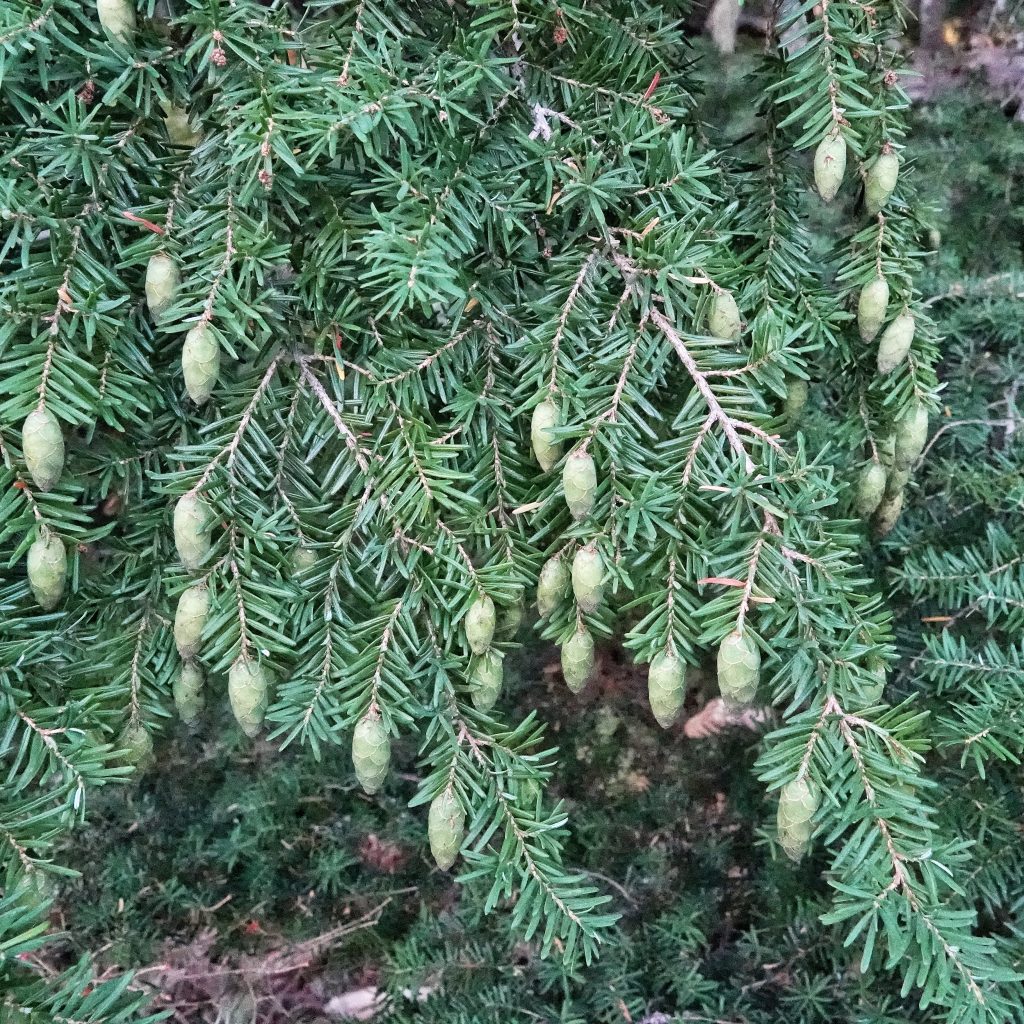
Tsuga heterophylla (western hemlock) description
Western Hemlock, Tsuga heterophylla | Native Plants PNW
BRIT – Native American Ethnobotany Database
OregonFlora Tsuga heterophylla
Burke Herbarium Image Collection
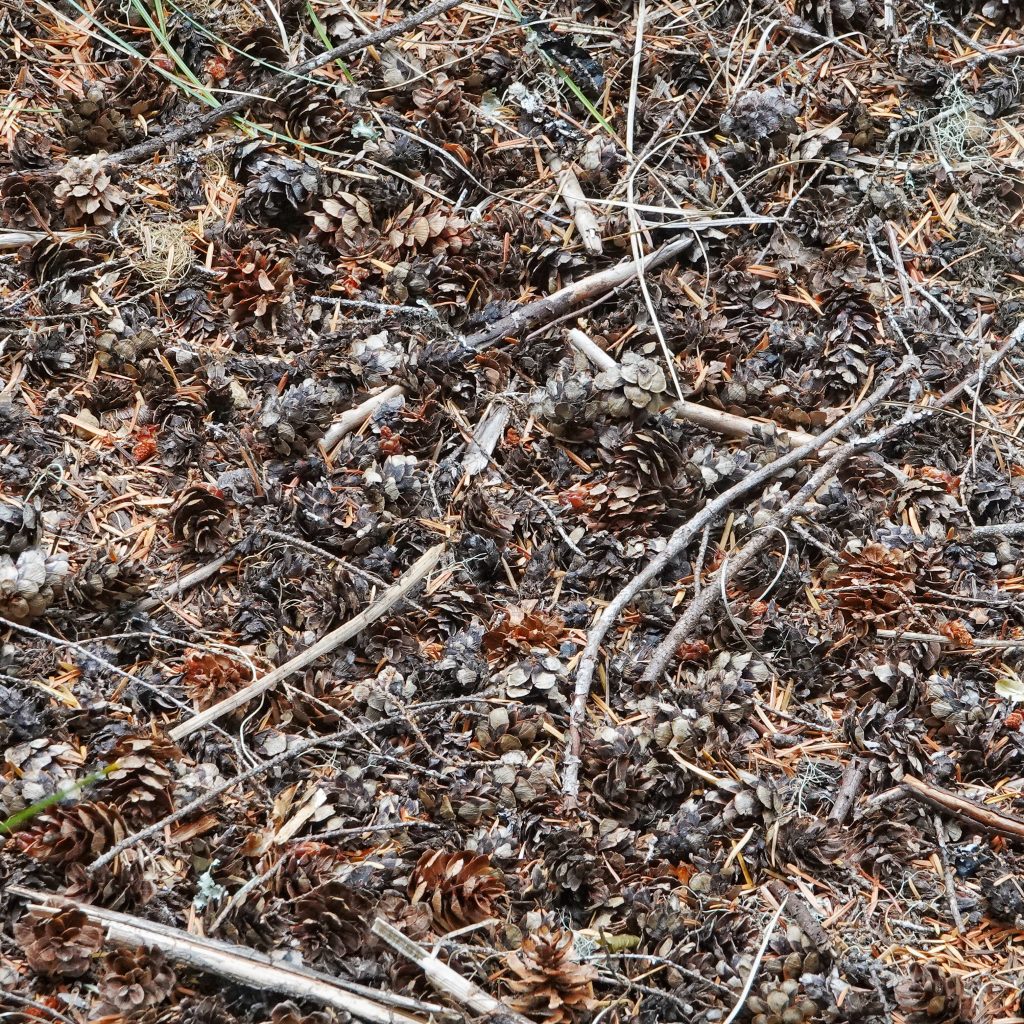
6 thoughts on “Tsuga heterophylla (Western Hemlock)”